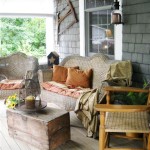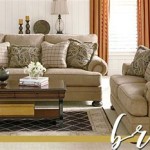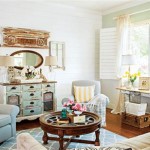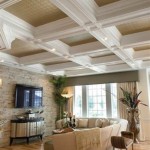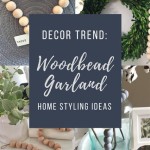Accessorize Home Decor: A Comprehensive Guide to Enhancing Your Living Space
Accessorizing home decor involves the strategic selection and placement of items that contribute to the overall aesthetic appeal and functionality of a living space. It is an art form that allows individuals to personalize their homes, reflecting their tastes, preferences, and lifestyle. The right accessories can transform a mundane room into a captivating and inviting environment. This article provides a detailed overview of accessorizing home decor, exploring key elements, stylistic approaches, and practical considerations for creating a harmonious and personalized living space.
Understanding the Role of Home Decor Accessories
Home decor accessories serve multiple purposes beyond mere decoration. They contribute to the overall ambiance, enhance the functionality, and express the homeowner's individuality. Accessories can define the style of a room, highlighting specific design themes or creating a unique blend of styles.
Firstly, accessories enhance the aesthetic appeal of a space. They introduce color, texture, and pattern, which are crucial elements in interior design. A well-chosen throw pillow, for instance, can add a pop of color to a neutral sofa, while a textured rug can provide visual interest to a hardwood floor. Accessories help to break the monotony of plain surfaces and create a visually stimulating environment.
Secondly, accessories can improve the functionality of a room. Items like storage baskets, organizational shelves, and multi-functional furniture not only enhance the decor but also serve practical purposes by maximizing space and minimizing clutter. A stylish tray can hold remote controls and magazines, keeping them organized and accessible. Similarly, a decorative ladder can serve as a towel rack in a bathroom or a blanket holder in a living room.
Thirdly, accessories allow homeowners to express their personal style. They provide an opportunity to incorporate cherished items, collections, and mementos that reflect their interests, hobbies, and memories. Artwork, photographs, travel souvenirs, and unique collectibles can be displayed to create a personalized and meaningful living space. This personalization is what transforms a house into a home.
Key Elements of Home Decor Accessories
Effective home decor accessorizing requires careful consideration of various elements that work together to create a cohesive and balanced design. These elements include color, texture, scale, and material.
Color: Color is one of the most impactful elements in home decor. Accessories can be used to introduce color accents that complement or contrast with the existing color scheme. Color coordination is crucial in creating a harmonious look. For example, using complementary colors like blue and orange can create a vibrant and energetic atmosphere, while analogous colors like blue, blue-green, and green can create a calming and serene environment. Neutral colors like gray, beige, and white can serve as a backdrop for bolder color accents in accessories.
Texture: Texture adds depth and dimension to a room. Incorporating a variety of textures through accessories can create a more engaging and tactile experience. Texture can be introduced through fabrics, materials, and finishes. For example, a velvet throw pillow can add a touch of luxury, while a woven basket can provide a rustic feel. Combining smooth and rough textures, such as a polished ceramic vase with a knitted blanket, can create visual interest and balance.
Scale: The scale of accessories should be proportionate to the size of the room and the surrounding furniture. Overly large accessories can overwhelm a small space, while too-small accessories can get lost in a larger room. Balancing the scale of accessories is essential for creating a visually appealing and harmonious design. A large piece of artwork can serve as a focal point in a living room, while smaller accessories like candles and figurines can be grouped together to create a curated vignette.
Material: The choice of materials for accessories can significantly impact the overall aesthetic. Materials like wood, metal, glass, and ceramics offer different visual and tactile qualities. Wood can bring warmth and naturalness to a space, while metal can add a touch of modernity and sophistication. Glass and ceramics can introduce elegance and refinement. Selecting materials that complement the existing decor and reflect the desired style is crucial.
Stylistic Approaches to Accessorizing Home Decor
There are various stylistic approaches to accessorizing home decor. Each style offers a unique aesthetic and reflects different design principles. Some popular styles include minimalist, maximalist, contemporary, and bohemian.
Minimalist: Minimalist decor emphasizes simplicity and functionality. Accessories are kept to a minimum, and each item is carefully selected for its aesthetic and practical value. Clean lines, neutral colors, and uncluttered surfaces are characteristic of this style. Accessories in a minimalist space might include a simple vase, a few pieces of abstract artwork, and a small collection of books.
Maximalist: Maximalist decor embraces abundance and eclecticism. It involves layering multiple accessories, colors, and patterns to create a rich and visually stimulating environment. Maximalist spaces are often filled with collections, artwork, and personal mementos. This style encourages self-expression and individuality, allowing homeowners to showcase their unique tastes and interests. Textural variety and layering are key; think multiple throw blankets, an abundance of throw pillows, and art covering most of the wall space.
Contemporary: Contemporary decor reflects the trends of the present moment. It is characterized by clean lines, geometric shapes, and a focus on functionality. Contemporary spaces often incorporate modern materials like metal, glass, and concrete. Accessories in a contemporary room might include sleek lighting fixtures, minimalist sculptures, and graphic prints.
Bohemian: Bohemian decor is characterized by its relaxed and free-spirited aesthetic. It incorporates a mix of cultures, patterns, and textures. Bohemian spaces often feature vintage furniture, ethnic textiles, and natural elements like plants and wood. Accessories in a bohemian room might include macrame wall hangings, woven rugs, and a collection of potted plants. Comfort and personalization are hallmarks of this style.
Practical Considerations for Accessorizing
Beyond the aesthetic considerations, successful accessorizing also involves practical aspects such as budget, placement, and maintenance.
Budget: Setting a budget for accessories is essential to avoid overspending. Prioritize the items that will have the most significant impact and allocate resources accordingly. Consider shopping at thrift stores, flea markets, and online marketplaces to find affordable and unique accessories. DIY projects can also be a cost-effective way to create personalized decor items.
Placement: The placement of accessories is crucial for creating a balanced and visually appealing design. Consider the size, shape, and color of the accessories when deciding where to place them. Grouping similar items together can create a more cohesive look, while scattering accessories throughout the room can create a sense of visual interest. Consider the flow of traffic and ensure that accessories do not obstruct pathways or create safety hazards.
Maintenance: Regular maintenance is necessary to keep accessories looking their best. Dusting, cleaning, and organizing accessories can prevent them from becoming cluttered or damaged. Use appropriate cleaning methods for different materials and surfaces. Rotate accessories periodically to refresh the look of the room and prevent them from becoming stale.
Functionality: When selecting and placing accessories, it's important to keep functionality in mind. A decorative item should not only look good but also serve a purpose or enhance the usability of the space. For instance, a stylish basket can be used to store blankets or toys, a decorative tray can hold coffee table books or candles, and a wall-mounted shelf can display books or plants while maximizing space.
In conclusion, accessorizing home decor is a multifaceted process involving careful selection, strategic placement, and a deep understanding of design principles. By considering the role of accessories, key elements, stylistic approaches, and practical considerations, individuals can transform their living spaces into personalized and inviting environments that reflect their unique tastes and lifestyles.

Accessorize A Room With These 10 Things Stonegable

How To Accessorize Like A Pro Melissa Roberts Interiors

How To Accessorize Like A Pro Melissa Roberts Interiors

Accessorize Your Home With Kartopu Wool Decor How To Do It Blog

Decor Items For Home To Accessorize Every Room 29 Options Building And Interiors

How To Decorate My Living Room Decor For Beginners

Accessorize A Room With These 10 Things Stonegable

6 Ways To Accessorize A Gallery Wall Decor Living Room Family Walls

Accessorize A Room With These 10 Things Stonegable

How To Accessorize Your Home On A Budget
Related Posts
